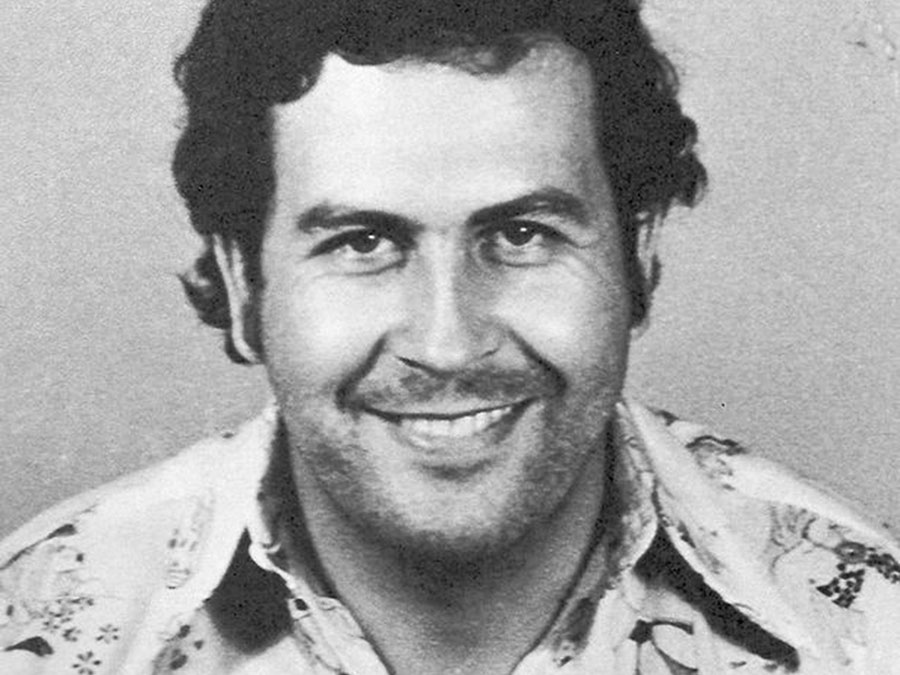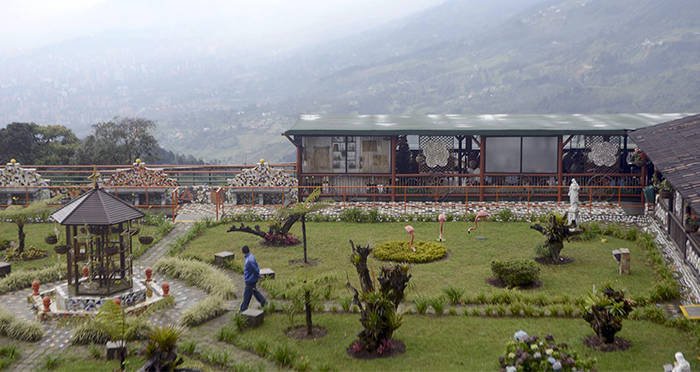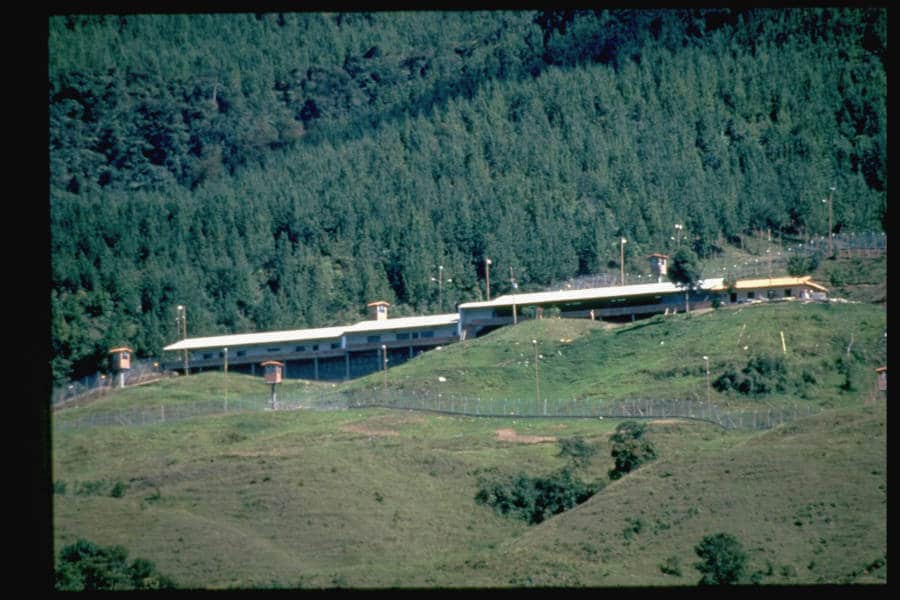Last updated on January 27th, 2023 at 05:13 am
In the early 1990s, Colombian drug lord Pablo Escobar had a problem. He was on the run from the law and needed to find a place to hide. So, he did what any criminal mastermind would do- built his own prison.
La Catedral was a self-built prison that sat on top of a hill in Antioquia, Colombia. It was designed to be impenetrable, and it certainly fulfilled that purpose. Let’s take a closer look at the history of La Catedral and its infamous resident, Pablo Escobar.

Who Is Pablo Escobar?
To understand how Pablo could build La Catedral, we must first discuss the person behind it. Pablo Escobar was born in 1949 to a low-income family in Rionegro, Colombia. He was the son of a poor farmer, and his mother was a schoolteacher.
Despite this, he began a life of crime as a teenager selling fake diplomas, smuggling stereo equipment, and stealing cars. Stealing cars eventually led to his first arrest in 1974.
Around this time, the Cocaine industry was booming in Colombia. Escobar saw this as an opportunity to make quick money, so he started smuggling drugs.
In the mid-1970s, he helped create the organization later known as the Medellin cartel. As he grew in notoriety, he partnered with other powerful men like the Ochoa brothers (Juan David and Jorge Luis). Not long after, Pablo served as the head of the organization, which mainly focused on producing, transporting, and selling cocaine.
By the mid-1980s, Pablo Escobar was one of the richest men in the world. According to reports, he was worth around $25 billion. In addition, he bought himself a massive estate called Hacienda Napoles, a 7,000-acre property with a soccer field, airstrip, artificial lakes, and a zoo.

Pablo also participated in charity work which allowed him a short career in politics; in 1982, the country elected him to Congress. However, despite his influential position, many still know Pablo as a ruthless drug lord.
The Construction of La Catedral
Eventually, the government couldn’t ignore his illegal activities, and the Colombian government issued a warrant for arrest. Initially, this did little to dissuade the kingpin from his actions. It wasn’t until his cartel began fighting an all-out war on all fronts that he realized he needed a place to escape.
At the time, he was constantly on the radar of a vigilante group known as Los Pepes, who would go on to assassinate hundreds of his associates, friends, and family.
In addition, the war with his long-time rivals, the Cali cartel, was endangering life. Escobar even helped extradite fellow drug lords like Carlos Lehder to the United States. One might say that the final straw happened when his daughter Manuela was injured in a bombing of his home.
It was until he realized he could be extradited to the United States that he decided to negotiate with the Columbian government. He always used to say, “Better a grave in Columbia than a cell in the U.S.” It seemed that he would be the theme of his final days.
Pablo Escobar surrendered to authorities on June 19, 1991, agreeing to serve his time in a “prison of his own design.” And so, La Catedral was born. The prison resembled a more luxurious resort than an actual institution. The prison was designed with Escobar’s comfort in mind. It had a bar, disco, jacuzzi, and waterfall.

Of course, this level of comfort came at a price. Escobar’s men heavily guarded the prison to ensure his safety. The fortress kept his enemies out and his friends in. In other words, it was the perfect place for Pablo to continue running his drug empire from behind bars.
Escobar’s Time at La Catedral
The Narco’s ability to use his influence to his advantage was no more apparent than during his time at La Catedral. Despite his surrender conditions, Escobar could still smuggle cocaine and run his cartel with ease. As a result, many government officials declared that Pablo’s “prison” sentence was a complete farce.
He was still in charge, and the government had no control over him. Yet, even with this apparent breach of agreement, the Columbian government still allowed Escobar to serve his time at La Catedral.
At the time, President Cesar Gavira declared that Escobar’s treatment would fall within the demands of the law, but no one was buying it. The writing was on the wall; Escobar had won again. Perhaps adding insult to injury, the government added an amendment to the constitution stating the government could extradite no citizens to the United States.
Escobar was free to do as he pleased since the government allowed him to run his prison his way. Often Pablo would have professional soccer players, prostitutes, and parties at his “prison on many occasions.”

Unfortunately, the level of security was so low that Escobar’s brutality was rampant, as sources say he tortured and killed four of his lieutenants over a monetary dispute.
The Government Cracks Down
Pablo Escobar only spent 13 months at La Catedral before escaping on July 22, 1992. His escape is still a mystery, but undoubtedly, he had bribed his way to the top positions in the government.
When two officials came to tell him that things were changing and he was being moved to a more secure location under the government’s control, Escobar held them hostage, as he decided what to do with them.
However, before he could kill them, a firefight broke out, and Escobar was able to escape in the commotion. This was a turning point for the Columbian government.
They could no longer turn a blind eye to Escobar’s atrocities. The government finally decided to launch an all-out offensive against the drug lord. Seeking the help of the United States and Los Pepes, the National Police of Columbia, known as Search Bloc, pursued the Narco.
A massive search ensued, and despite the resources put into his capture, Escobar managed to evade capture for seventeen months. Finally, it wasn’t until a day after his 44th birthday that Escobar died in a shootout with Colombian National Police.
Escobar’s Legacy Today
While many believe that Pablo Escobar’s time at La Catedral was nothing more than a way for him to continue his illegal activities, there is no denying that the prison symbolized his power and influence.
La Catedral will forever be one of the most infamous prisons, and it serves as a reminder of the dangers of the cartels’ power. It also serves as an asylum for the poor and elderly run by Benedictine monks.

